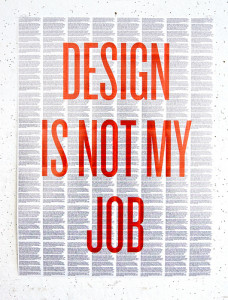 A recent article in Business Insider was doling out tips on content marketing for Google +, noting how we as consumers love sharing images because, well, they’re easy to consume.
A recent article in Business Insider was doling out tips on content marketing for Google +, noting how we as consumers love sharing images because, well, they’re easy to consume.
“Content may reign supreme on the Web, but the formatting of that content comes in a very close second,” according to Business Insider. “After all, if a user can’t process your information because of display or readability problems, it doesn’t matter how great it is. They still can’t read it.”
Indeed, as Joe Pulizzi, founder of the Content Marketing Institute, demonstrates for Business 2 Community on a number of print and digital content marketing examples that have impressed him, a wealth of images, readability, and interactivity should be top priority.
A fitness mag, Experience Life, scores high points, for instance, because it builds a brand both online and in print, successfully blending its content across all platforms. Zappos ZN digital magazine integrates stories with reviews, and illustrates “content-to-commerce” concept successfully by offering to purchase directly from the iPad. An ice-cream company Jeni’s Splendid Ice Creams is giving away recipes, and a high-end wine retailer LCBO distributes its magazine, VINTAGES, as a digital book.
Extending branding, as Heidi Cohen calls it in her “13 Content Marketing Steps” article on ClickZ, requires understanding that content marketing at the very least calls for “a human voice, photographs, and video.” Cohen says:
Present your content to get attention. Remember your content is fighting for consumers’ most scarce resource — time! Therefore, it has to stand out. This translates to writing killer headlines they can’t resist reading, magnetic photographs, especially of people, that draw them in, and bulleted, easy-to-scan information. […]
While content marketing may not be as sexy as other forms of marketing, it breaks through today’s message-filled clutter because it lacks the buy, buy, buy of other marketing options.
While it may seem like a no-brainer — create irresistible, attention-grabbing, visually rich content, and consumers will come — there are ways to go about it and trends to heed.
Great Design Is the Future of Content Marketing
In his article for Mashable, titled “Why Great Design Is the Future of Content Marketing,” Chuck Longanecker stresses what he refers to as the “importance of visual storytelling,” pointing out that the “beautification of the Web” is here. Services like Facebook Timeline, Instagram, Pinterest, and the increasing popularity of mobile browsing are “forcing brands to think and act more visually,” he says.
In this light, Longanecker explores the 2012 visual trends that he thinks should be affecting the businesses’ content marking plans. Let’s take a look:
Apps and Their Intuitive Design
Companies like Microsoft, Facebook, and Google have taken note that “good design is good for business,” and are not just buying technology but also hiring designers to create “experiences.” Other popular and growing services, such as Flipboard, Path, Clear, and, again, Instagram, have put “strategic emphasis on the intuitive design,” notes Longanecker.
Special Effects
Users spend more time browsing on their tablets and smartphones, says Longanecker, rendering desktop navigation “archaic.”
Longanecker says:
This shift has led to a new crop of slick web designs that feature more complex interactions and visual effects, thanks to technologies such as HTML5 and CSS3.
For example, we’re seeing more interactive buttons, sliding and fading visual elements, parallax experiences on scrolling sites, and even elements of augmented reality.
Responsive Web Design
Instead of creating one site for desktop viewing and another for mobile browsing, businesses can use responsive design and adjust it “based on the viewer’s screen of choice,” says Longanecker. “For example, desktop browsers may get the full experience, while mobile users may see more ‘task-oriented’ content and minimal design.”
Minimalism
Longanecker reminds us how sites like Tumblr, Simple, and Square all feature user-friendly, “Google-esque” minimalism that inspires user loyalty because of its simplicity and respect for the customer’s time. Virtually page-free, slide-based sites and cloud-based storage services like Dropbox are all the rage.
Finally, Longanecker says:
The beautification of the web is also good news for startups. The old web was based on design standards born in the newspaper and magazine industries. Today, we’re in the midst of a renaissance that puts the online and mobile experiences first.
Image by Andy Mangold, used under its Creative Commons license.